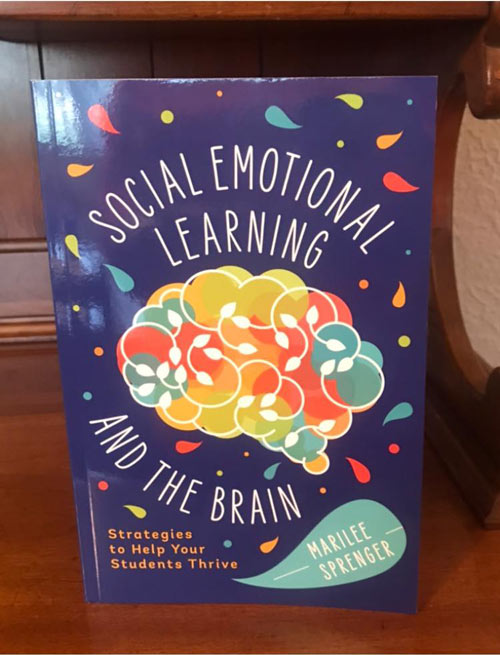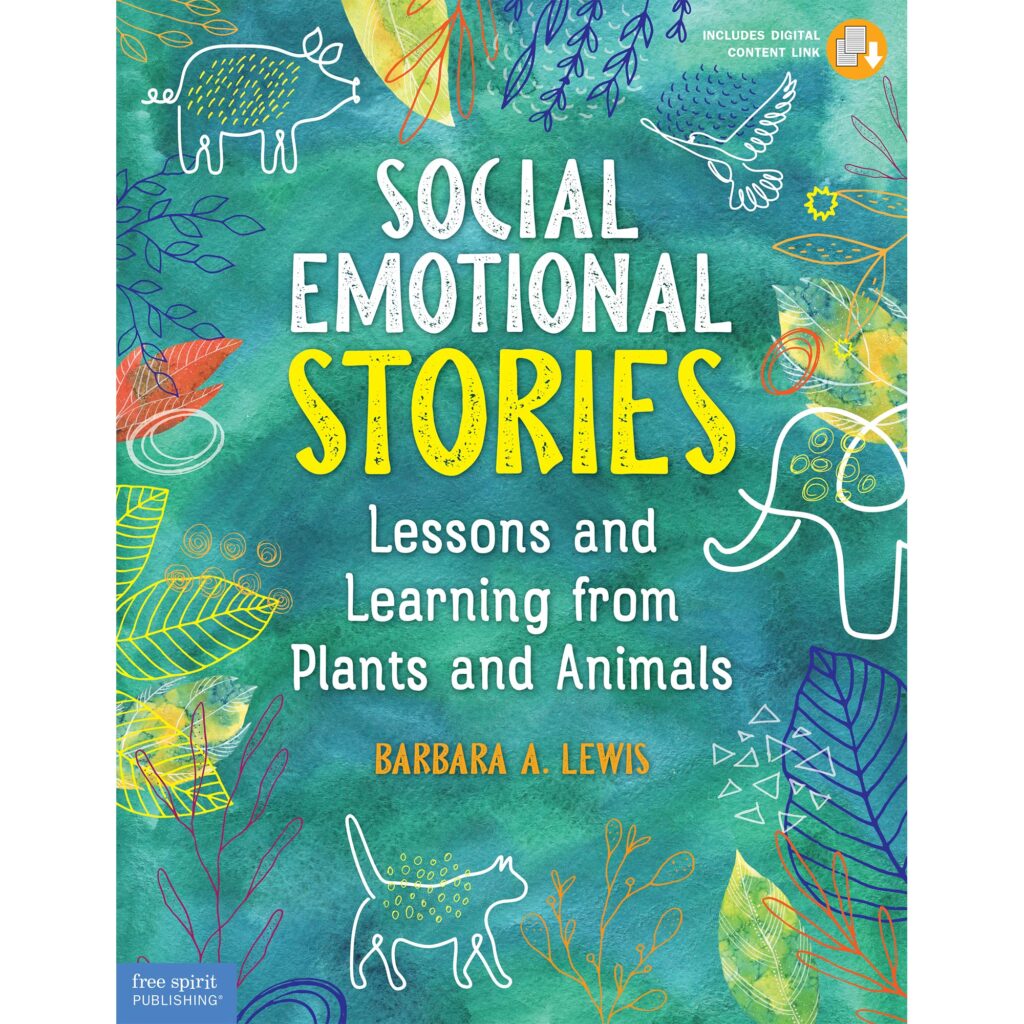What is Social-Emotional Learning?
What’s inside this article: Information regarding social-emotional learning, including the definition, core competencies, the benefits of SEL, programs, books, and resources for teachers and parents.
What is Social-Emotional Learning?
Social-Emotional Learning (SEL for short) is the process of learning and applying the skills necessary to manage emotions, have self-awareness and social awareness, and show empathy.
SEL is important for children to develop to maintain positive relationships, decision-making skills, develop perspective-taking skills, and build emotional intelligence.
Kids are born with many intense emotions, but they aren’t born with the skills to respond to, express, or cope with these emotions.
This is why engaging in social-emotional learning from early childhood is so important.
5 Components of SEL
There are 5 key components to social-emotional learning. The skills developed under each component builds upon and intertwines with others.
1. SELF-AWARENESS
Recognizing your own emotions, thoughts, and values. Self-awareness also includes understanding how your thoughts and emotions effect your behavior.
- Identifying emotions
- Accurate self-perception
- Recognizing strengths
- Self-confidence
- Self-efficacy (having a ‘growth mindset’)
2. SELF-MANAGEMENT
Successfully regulating your emotions and behaviors in different situations. This includes controlling impulses, managing stress, motivating yourself, setting and working toward goals.
- Impulse control
- Stress management
- Self-discipline
- Self-motivation
- Goal-setting
- Organizational skills
3. DECISION MAKING
The ability to make positive choices about your own behavior and social interactions based on ethics, social norms, and the consideration for yourself and others.
- Identifying problems
- Analyzing situations
- Solving problems
- Evaluating
- Reflecting
- Ethical responsibility
4. RELATIONSHIP SKILLS
Establishing and maintaining healthy relationships with others including diverse individuals and groups.
This includes the ability to communicate, listen to others, manage conflict, seek and offer help as needed.
- Communication
- Social engagement
- Relationship building
- Team work
5. SOCIAL AWARENESS
Taking the perspective of, and emphasizing with, others, including those with diverse backgrounds.
- Perspective-taking
- Empathy
- Appreciating others
- Respect for others

Social-Emotional Learning Standards
CASEL, short for The Collaborative for Academic, Social, and Emotional Learning sets the standards for social-emotional learning outcomes based on evidence-based research. CASEL brings together policymakers, educators, and practitioners to help turn research into effective social-emotional learning programs in K-12 schools.
In 2020, CASEL updated their definition of social-emotional learning to the following:
“Social and emotional learning (SEL) is an integral part of education and human development. SEL is the process through which all young people and adults learn skills, and attitudes to develop healthy identities, manage emotions and achieve goals, feel and show empathy for others, establish and maintain supportive relationships, and make responsible and caring decisions.
SEL advances educational equity and excellence through authentic school-family-community partnerships to establish learning environments and experiences that feature trusting and collaborative relationships, rigorous and meaningful curriculum and instruction, and ongoing evaluation. Social-emotional learning can help address various forms of inequity and empower young people and adults to co-create thriving schools and contribute to safe, healthy and just communities.”
Benefits of Social-Emotional Learning
Social and emotional learning (SEL) provides a foundation for safe and positive learning, and enhances students’ ability to succeed in school, careers, and life.
To date, there have been over 213 studies about SEL, involving more than 270,000 students. Results show those who participated in evidence-based SEL programs showed statistically significant improvements across various areas compared to those who did not.
Here are just some of the benefits of social-emotional learning:
- Teaches problem-solving skills
- Improves school and classroom environment – Children feel safer and more supported in classrooms that incorporate social-emotional learning practices.
- Increases intrinsic motivation
- Decreases behavior challenges – often, challenging behavior is the result of lagging skills from the various components to SEL mentioned above. As children develop these skills, behavior challenges decrease.
- Improved academic performance – Researchers found students who participated in social-emotional learning showed, on average, an 11% increase in academic performance.
- Improves self-regulation
- Reduced mental health challenges – SEL helps children develop a growth mindset, build resilience and self-confidence, all of which help combat mental health challenges such as depression and anxiety
- Teaches coping skills
- Improves distress tolerance
- Better interpersonal skills – Kids who’ve participated in social-emotional learning programs learn more about friendships, perspective-taking, communication skills, teamwork, etc, improving their interpersonal skills with peers and adults
- Life-long benefits: Social-emotional learning decreased the likelihood of living in or being on a waiting list for public housing, receiving public assistance, having any involvement with police before adulthood, and ever spending time in a detention facility
Social-Emotional Learning Books
Social Emotional Learning & The Brain – Marilee Sprenger
This book explains how to:
- Build strong, caring relationships with students to give them a sense of belonging.
- Teach and model empathy, so students feel understood and can better understand others.
- Awaken students’ self-awareness, including the ability to name their own emotions, have accurate self-perceptions, and display self-confidence and self-efficacy.
- Help students manage their behavior through impulse control, stress management, and other positive skills.
- Improve students’ social awareness and interaction with others.
- Teach students how to handle relationships, including with people whose backgrounds differ from their own.
- Guide students in making responsible decisions.

Mindful Classrooms™
A guide for busy elementary educators on how to easily incorporate mindfulness activities into existing curriculum.
This interactive, research-based curriculum helps PreK and elementary teachers integrate simple, ready-to-use stretching, breathing, and reflective exercises as well as other mindfulness practices into their daily routines. Includes digital content with reproducible handouts from the book.

Social Emotional Stories: Lessons and Learning from Plants and Animals
The book contains 24 individual lessons that include:
- An SEL objective with specific keywords like “inner strength,” “problem-solving,” and “responsibility”
- An engaging story that focuses on a distinctive quality of either a plant (like the inner strength of bamboo) or an animal (like the courage of a pig)
- Multiple activities that are quick, easy, and require few supplies to help kids identify and dive deeper into the specific SEL concepts represented
Educators can use these lessons individually with students, in small groups, or with an entire class. The lessons are interdisciplinary and flexible, with only minimal prep time required, allowing educators to adapt them for their situation. Extensive digital content supports the lessons with reproducible forms and a full-color photo of each plant and animal.

Children’s Books for SEL
Books are one way to introduce students to social-emotional learning concepts.
Researchers found that the brain activity that occurs when we read fiction is very similar to experiencing that situation in real life.
This means reading about a situation or concept helps children work out how to solve it in reality.
I’ve curated a list of my favorite Julia Cook books for social-emotional learning you can view here.
You can also view this list of children’s books about emotions. Understanding and identifying emotions is a crucial part of social-emotional learning.
Social Emotional Learning Programs
There are many great social-emotional learning programs available. There’s definitely something for every age group.
However, CASEL only recommends using SEL programs that meet the following criteria:
- Be well-designed classroom-based programs that promote students’ social and emotional competence, provide opportunities for practice, and offer multi-year programming.
- Deliver high-quality training and other supports, including initial training and ongoing support to ensure sound implementation.
- Be evidence-based with at least one carefully conducted study that documents positive impacts on student behavior and/or academic performance.
They have set the bar high, because it’s their organizations job to ensure schools are providing high-quality, inclusive SEL programs.
These are just a couple programs I’m personally familiar with.
The Zones of Regulation
The Zones of Regulation is a complete social-emotional learning curriculum, created to teach children self-regulation and emotional control. You can use the early material with all ages but as the program progresses, its more appropriate for children aged 7+.
I wrote an overview of the zones of regulation for parents, you can read it here if you’re unfamiliar with the Zones program.
I also have a list of zones of regulation activities and printables here.
Superflex
Superflex provides a fun forum for kids to explore their challenges and identify ways to modify their thoughts and behavior in different settings.
This program depicts behaviors as cartoon characters (a.k.a. the Unthinkables) in a series of illustrated books, which helps students learn about their own behavior in a non-threatening way.
I find their books engaging for elementary-age children and they help kids understand complex social-emotional learning concepts while also teaching new skills.
There are a variety of games, handouts and worksheets, videos and other online learning content to help support students and educators.
Learn more about the Superflex program here.
I Can Problem Solve (ICPS)
I Can Problem Solve is a program that supports SEL in young children. Research on ICPS shows the program reduces impulsivity and improves students’ social skills and problem-solving skills.
The ICPS lessons are presented in the form of games, role-plays, and puppet experiences, all focused on developing students’ interpersonal cognitive problem-solving skills. The way the program is delivered makes it appropriate for pre-school-age children.
Learn more about I Can Problem Solve here.
